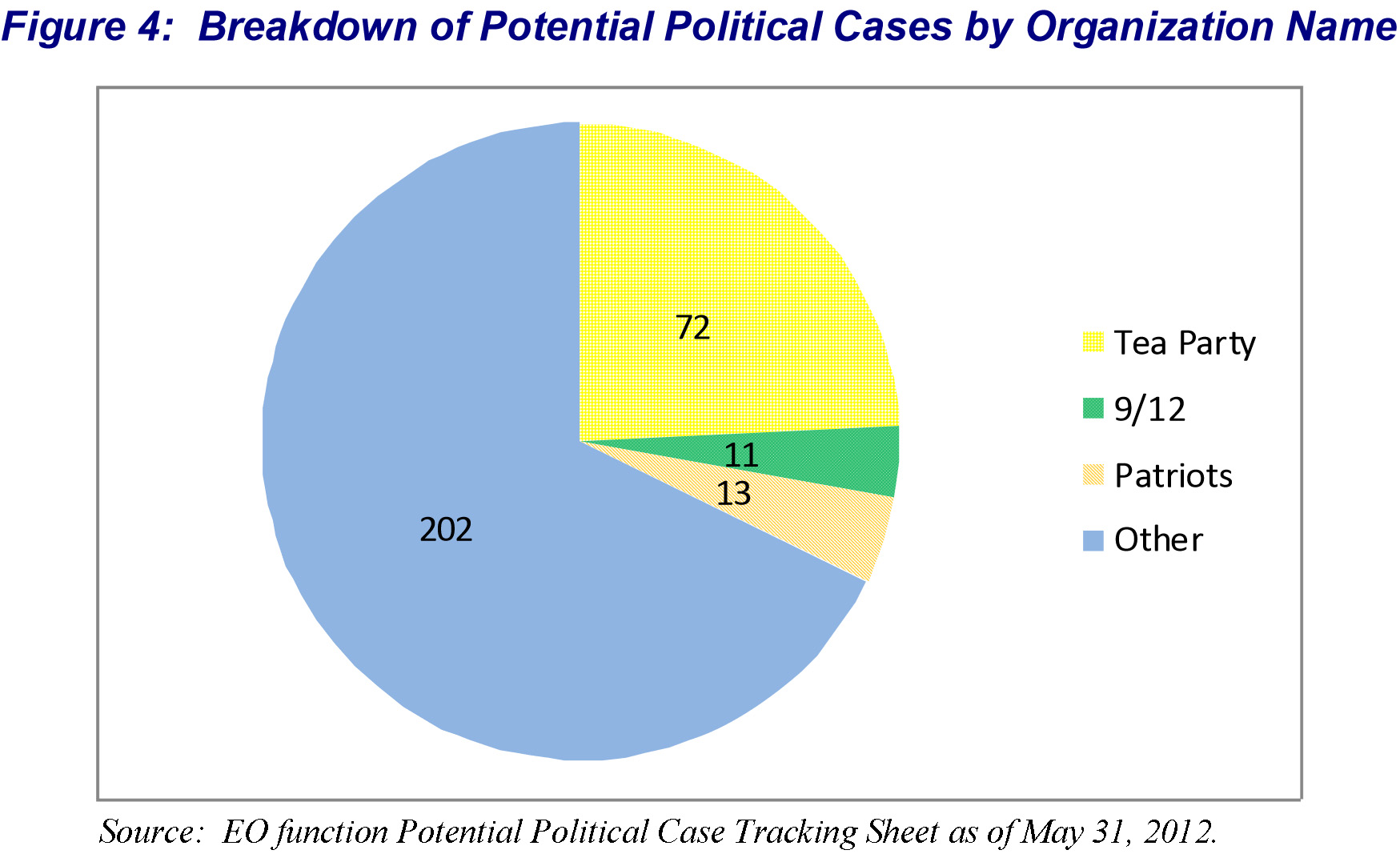I didn’t see this when it came out, but over at Townhall Guy Benson takes me to task for claiming last year that the IRS “scandal” was not an Obama administration effort to harass tea party groups. Rather, it was a general bureaucratic clusterfuck that targeted both liberal and conservative organizations. Benson links to a post I wrote about the final inspector general audit report on the topic, but faults me for not referring to the first IG report in that post. That’s fair enough, actually, and I should have done it in the first place. So here’s a chart from the first Treasury audit:

Sure enough, the only groups mentioned are conservative. Why is that? Well, as we’ve all known for years, it’s because Republicans asked for the report and specifically told the inspector general to look only for a few select names. That’s why we have 96 conservative outfits and nothing more. Everything else is lumped under “other”—and presumably even doing that went beyond the IG’s remit.
And just what is that “other”? Here’s a PowerPoint slide from an IRS training presentation explaining what kinds of names might be cause for suspicion that an organization is political, not educational, and therefore doesn’t qualify for tax-exempt status:

Note the elephant and the donkey in the top left. Needless to say, Democrats were a wee bit suspicious about this, so they asked for an audit using a new set of keywords. Years later, this one identified 181 additional groups that had been identified by their names, 146 of which were eventually audited. This brings us to the post I wrote last year. Here’s the chart I created based on data in the Treasury audit released last September:

Between the two reports, then, the IG identified 115 conservative groups (96 in the first audit, 19 in the second) and 110 liberal groups. Does this sound like a liberal conspiracy to sic the IRS on conservative groups? No it does not.
Now, you can produce different numbers depending on which parts of various reports you cherry pick. As you might expect, the Republican section of a 2015 congressional report insists that conservatives were unfairly targeted, and it was a lot more than 115 groups. Democrats disagreed. That’s how last year’s IG audit came about.
Conservatives can blather all they want, and I don’t expect any of this to have the slightest effect on their religious faith that the IRS under Obama targeted tea party groups for audits. They’re going to believe this forever. But the bulk of the actual evidence suggests that (a) the IRS adopted a program of identifying political organizations based on their names, (b) this was probably not a great idea, and (c) it was nonetheless a nonpartisan effort. The IRS officials involved were just trying to create a way to more efficiently ID groups that might not qualify for tax-exempt status because they were political, not educational. There’s simply no evidence that there was a partisan valence to any of it.

















